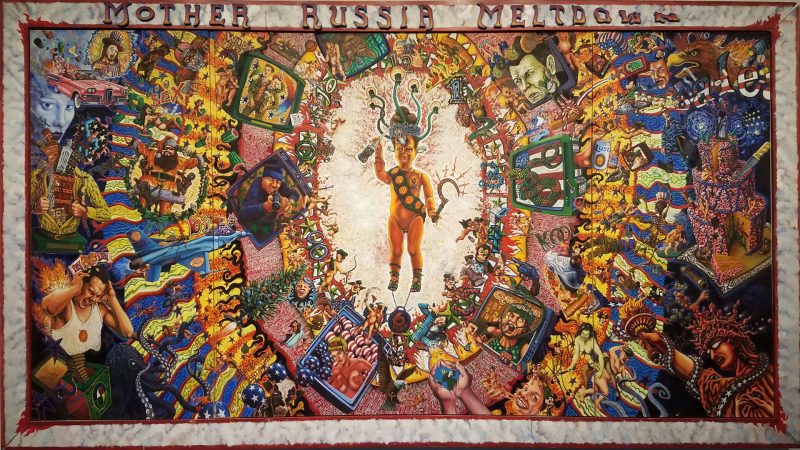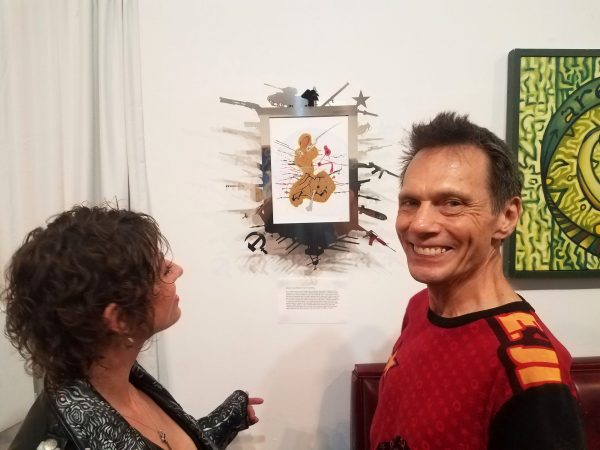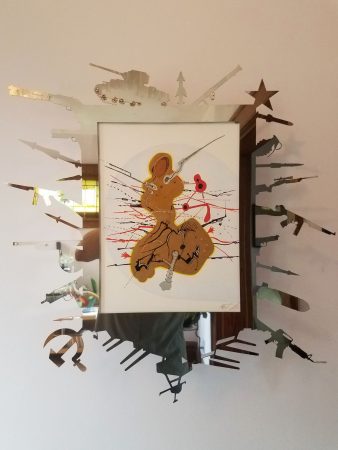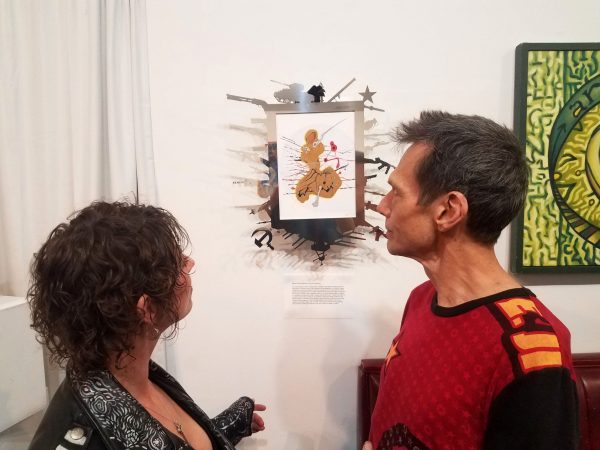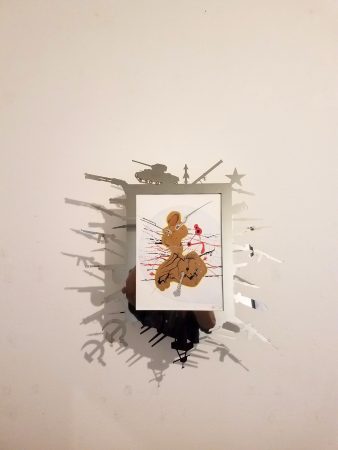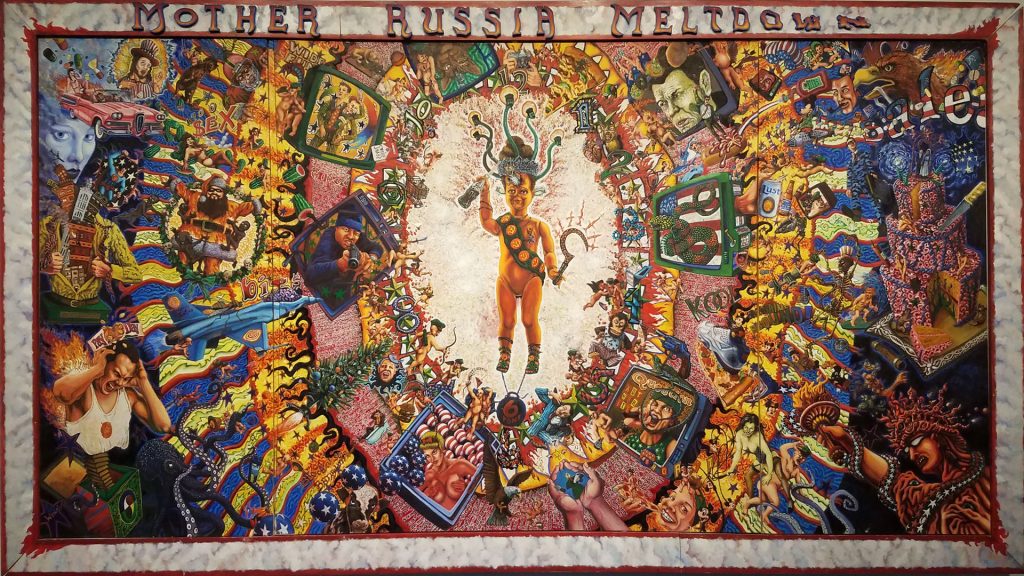
The original Mother Russia Meltdown by Charles Wince is the painting that inspired my work below. Charles’s extraordinary oil painting, created with a keen and critical eye, dissects the relentless noise of consumerism, the grip of oligarchs, and the exploitative nature of capitalism. As a self-taught artist, his work is both raw and deeply intentional, offering a sharp critique of the forces shaping modern society.
His masterwork has been in progress for many years, evolving as part of a broader collection of oil paintings on wood and canvas. This body of work interrogates the illusions of consumerist culture and exposes the hollow promises of economic systems built on exploitation and environmental destruction—an unflinching look at the cost of unchecked greed and power.
In response to Wince’s Mother Russia Meltdown, my work is a hand-drawn piece on paper, framed with laser-cut stainless steel. It engages in dialogue with his painting, echoing themes of collapse, conflict, and systemic failure, while also reflecting on the broader consequences of war, industry, and environmental ruin.
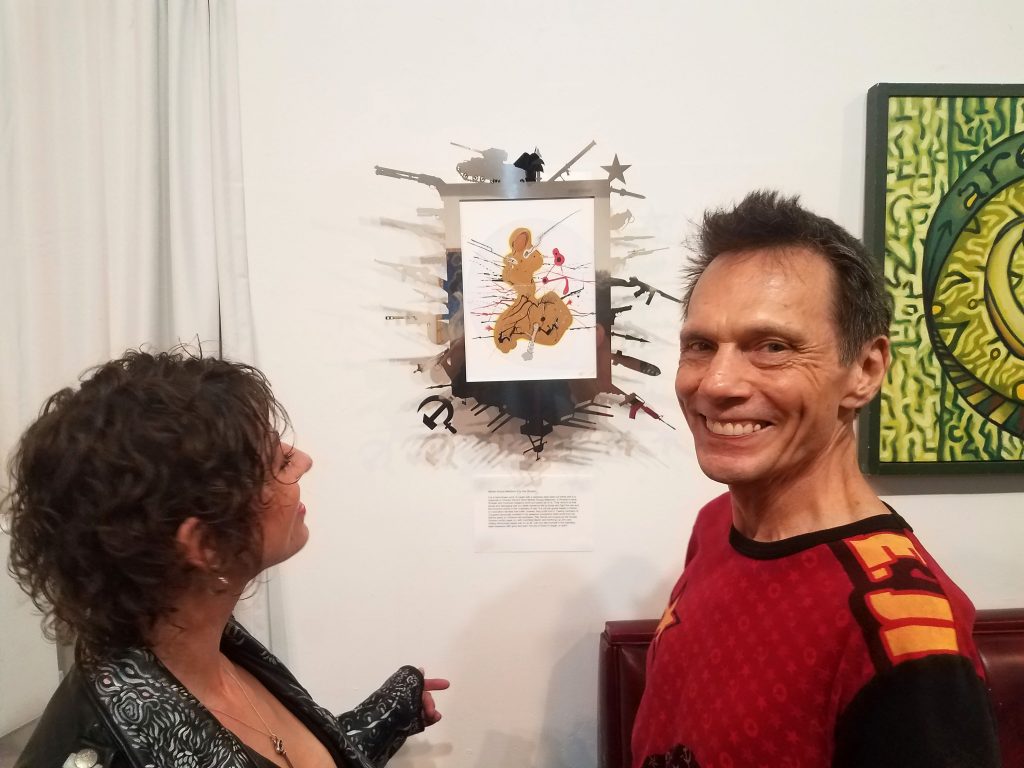
The Business of War: Who Profits, Who Suffers?
In my piece, Russian and American weapons are not just aimed at each other—they are pointed at all of us. They serve as stark reminders that war, whether fought on the battlefield or waged ideologically, is a death sentence for those caught in its crosshairs. The price is paid in human lives, in shattered communities, in the erosion of peace and stability.
Yet, it is not the children of world leaders or the heirs of corporate empires who suffer. Instead, they profit. War is an investment for them, a calculated risk that reaps billions in returns.
The Political-Military Nexus
Many members of the U.S. Congress currently hold personal investments in top weapons manufacturers, the very companies that are cashing in on the billions allocated for Ukraine’s military aid. This glaring conflict of interest is more than just an ethical dilemma—it is a systemic issue where the architects of war also sit at the table of its financiers.
As the war between Russia and Ukraine drags on, the U.S. defense industry sees record profits. Stocks of Lockheed Martin and Northrop Grumman have surged by over 20%, fueled by the steady flow of military contracts. War has always been good for business—just not for those who have to live through it.
A Culture Obsessed with Violence
Can you see yourself reflected in this stainless steel obsession with guns and war? Are you a victim, a target—or both? With widespread gun ownership in the U.S., do you truly feel safer?
Hollywood glorifies violence, idolizing the gun-wielding hero as a necessary force for good. The military-industrial complex thrives on this narrative, reinforcing the belief that power and security come from the barrel of a gun. The reality? This obsession with militarization doesn’t just shape foreign policy; it seeps into our communities, fueling domestic violence, mass shootings, and a culture that normalizes destruction.
The Global Cost of War
While arms manufacturers thrive, millions suffer. The people of Ukraine endure relentless bombardment, displacement, and unimaginable loss. Russian citizens, too, live under the weight of an authoritarian state that silences dissent and forces its young men into battle. And beyond these immediate war zones, the ripple effects spread—global grain shortages, embargoes that push entire regions into starvation, economies destabilized by conflict-driven inflation.
Meanwhile, as the U.S. military-industrial complex expands unchecked, so does its environmental footprint. The war machine does not only kill people—it poisons the planet. The carbon emissions of military operations, the destruction of ecosystems, and the waste of resources in perpetual conflict further accelerate climate collapse.
War is not just fought with bullets and bombs. It is fought with money, propaganda, and power. And while the powerful see it as an opportunity, the rest of the world is left to suffer its consequences.
I am also deeply sorrowful for the more-than-human world—the trees, the animals, the pets left behind in the chaos, and the intricate, living systems that sustain us all. War does not just devastate human lives; it scars the land itself, poisoning rivers, stripping forests, and leaving behind a toxic legacy that lingers for generations.
Bombs do not distinguish between combatants and the fragile ecosystems they obliterate. Forests become battlefields, homes for countless species turned to ashes. Streams that once nurtured life run thick with pollution from fuel spills, chemical runoff, and unexploded ordnance. The very air becomes tainted with the smoke of destruction, affecting not just those who breathe it now but those who will inherit this wounded earth.
The animals caught in war—whether the pets abandoned in the rush to flee, the livestock left to starve, or the wild creatures whose habitats are reduced to rubble—suffer silently, their pain often overlooked. Their losses do not make headlines, yet they, too, are casualties of human violence.
And war’s reach does not end when the fighting stops. The land bears the scars for generations. Soil poisoned by depleted uranium, dioxins, and heavy metals remains toxic long after the last shots are fired. Fields once fertile are left barren, rivers lifeless. Communities are forced to reckon not only with their own grief but with the slow, insidious decay of the land they call home.
War is not just a human tragedy—it is an assault on life itself. And as long as we continue down this path of destruction, we risk severing the very connections that sustain us, forgetting that we, too, are part of this fragile web of existence
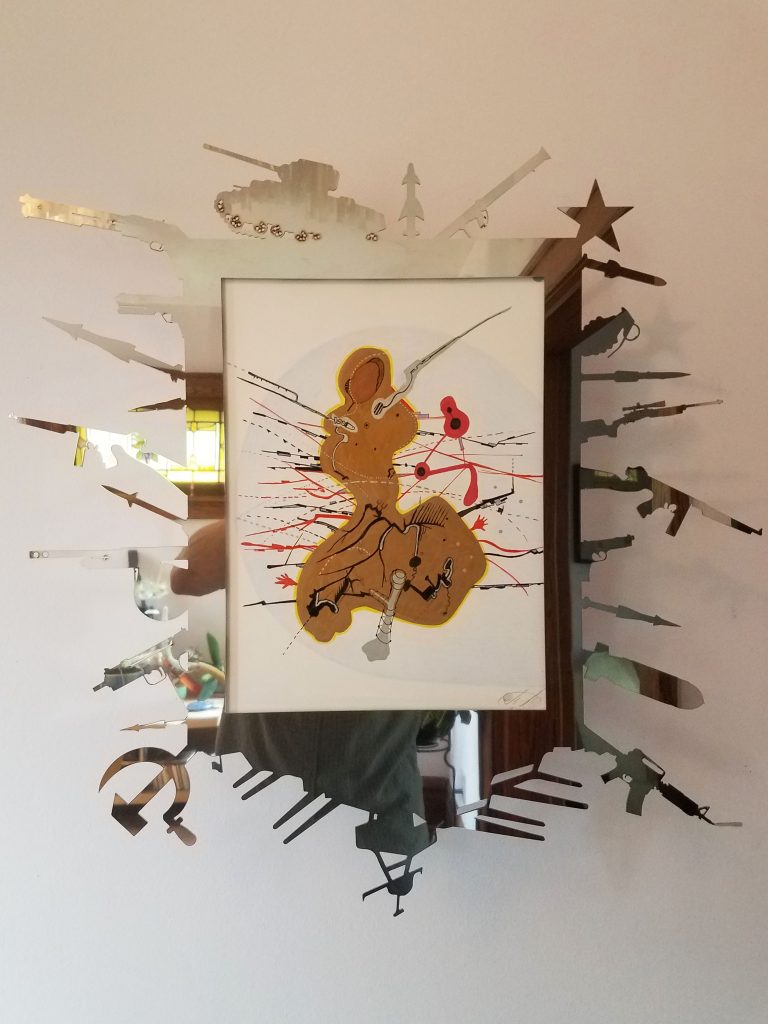
Mother Russia Meltdown 2 by Ken Rinaldo is a reflection on the universal suffering caused by war, extending its empathy not only to human victims but also to the unseen, often overlooked beings—those yet to be recognized, discovered, or acknowledged in the vast web of life. It mourns for all who endure the consequences of violence, whether visible or hidden, present or yet to come.
For me, this piece resonates deeply on a personal level. My father, along with my grandmother and aunt, once walked across France, fleeing the Nazi occupation of Paris. Their journey was one of survival, fear, and resilience—an experience that echoes through history and continues to be felt in the countless displaced lives of today’s conflicts.
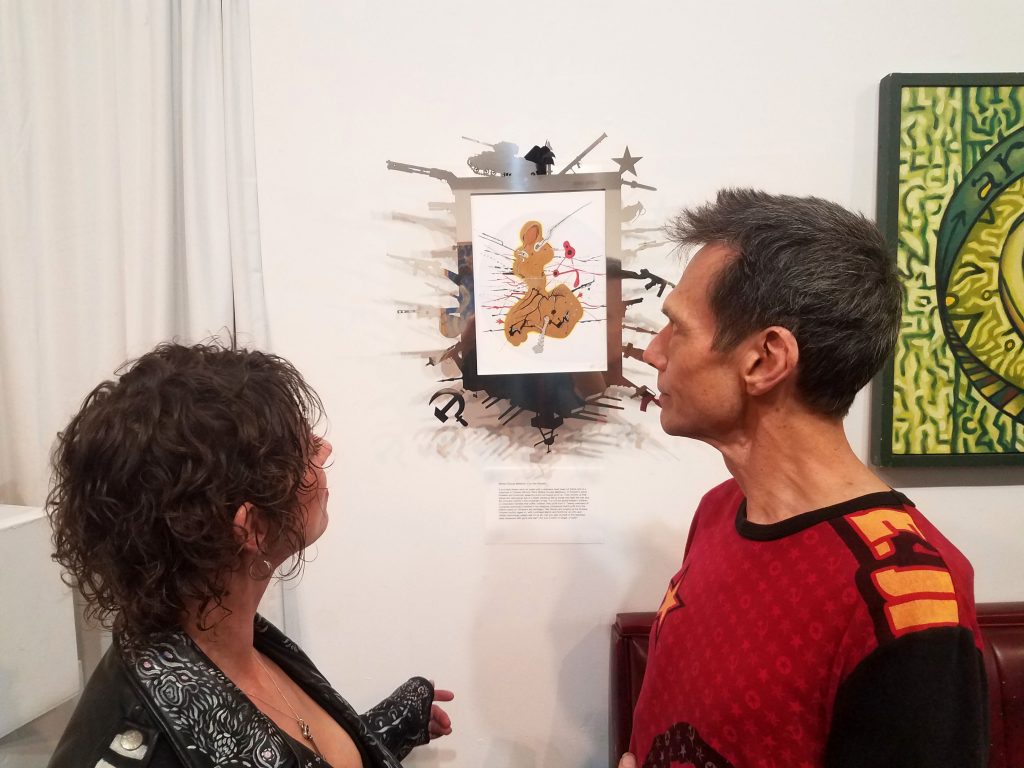
His growth was stunted due to severe malnutrition, a direct consequence of wartime scarcity. Deprived of essential nourishment during his formative years, his body bore the marks of a childhood spent in hunger. Yet, even greater than the physical toll was the emotional weight he carried—growing up without his father, who was killed by a mortar blast when he was just seven years old. The war didn’t just take his father’s life; it shaped his entire existence, leaving behind an absence that could never be filled.
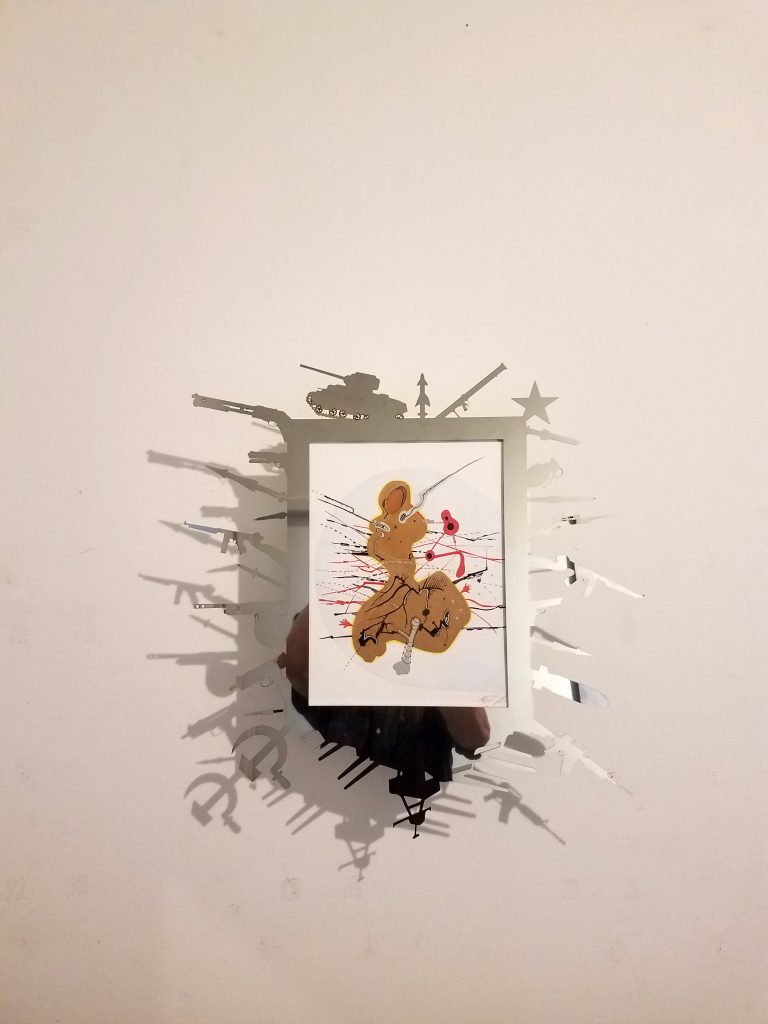
If not for the kindness of a Swiss family who took him in each summer and nourished him with proper meals, he may not have survived. Their generosity was a lifeline, offering him not only sustenance but a brief refuge from the hunger and hardship that defined his early years.
War and its wounds do not simply vanish when the last shots are fired. The pain, the trauma, and the loss ripple through generations, shaping lives long after the battles have ended. I feel an overwhelming sense of sorrow for the refugees forced to flee the senseless violence in Ukraine and Russia, leaving behind their homes, families, and histories in search of safety.
Charles Wince’s painting, though created long before the war in Ukraine, eerily foreshadows the present crisis. Originally reflecting on the collapse of the Soviet Union, its relevance today is striking—especially as the Zaporizhzhia nuclear plant remains under constant threat due to the Russian siege. What was once a prophetic vision of instability has now become an unsettling reality, with the specter of nuclear catastrophe looming over an already war-torn region.
